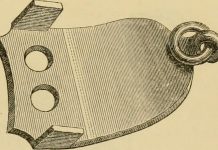The process of domestication can be regarded as a micro-evolution in which wild animals are removed from their communities and forced to reproduce and live under the control of man. Consequently, these animals acquire domestic traits, which are characteristics that are rare or absent in wild animals.
A variety of changes affect an animal at various levels of its organization: size, skeleton, horns, skin, coat, pigmentation, metabolic system, reproduction, behavior, and so on. Typically, such changes would appear within 50-100 generations, and it would only take a few centuries to produce a primitive domestic breed that could be recognized.
The domestic traits of animals do not result from mutations caused by the manmade environment, but rather from a profound alteration in selective processes under which they are exposed. Those animals with reduced chances for survival in the wild are protected while those with reduced chances of survival survive under abnormal conditions (restriction of free movement, crowding, human presence).
Because of the limited mating choices, animals with less “sex appeal” are allowed to contribute to the gene pool of the next generation in a different way, and older dominant males are removed or castrated so that younger ones can participate. By these means and others, “natural” selection is replaced by “artificial” selection. In the first phase, this process is unconscious since people are mainly interested in maintaining their animals or increasing their numbers.
The development of highly selected, advanced breeds occurs as a result of conscious artificial selection in complex societies. According to biological, archaeo (zoological), and historical evidence, domestic animals are monophyletic; they each descend from one wild ancestor. As an example, hump less cattle and zebu (humped) cattle, both descended from the wild bovid Bos primigenius, can derive quite different domesticate types from a single common ancestor. Although domestic animals are regarded as separate species, they are not genetically isolated from their wild parents, with whom they have fertile offspring.
Domestic animals’ technical nomenclature (Latin) has not yet been agreed upon. Bos primigenius taurus and Bos primigenius f. taurus are all names used for domestic cattle, as well as Bos taurus, Bos taurus, Bos indicus (if with hump), etc. Here are the most commonly used names, as well as those proposed by Herwart Bohlken and applied by the Kiel school.
Archaeozoologists study bone finds from archaeological deposits, as well as evidence from the visual arts, to reconstruct the older history of domestic animals. Water buffalo (Bubalus bubalis/Bubalis arnee f.bubalis) would not have reached the Nile Valley until the medieval period.
Read More – Chile’s Atacama Desert, The Driest Place Experiences Periodic Blooms






